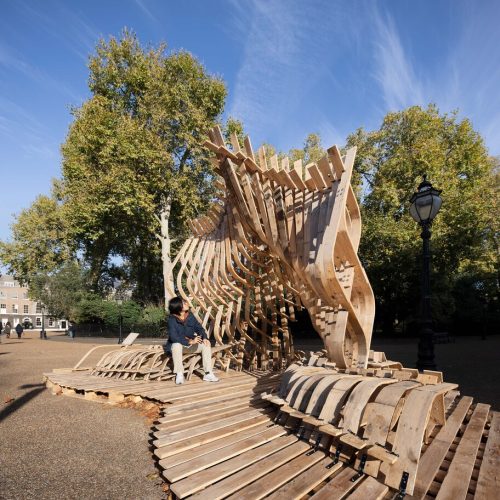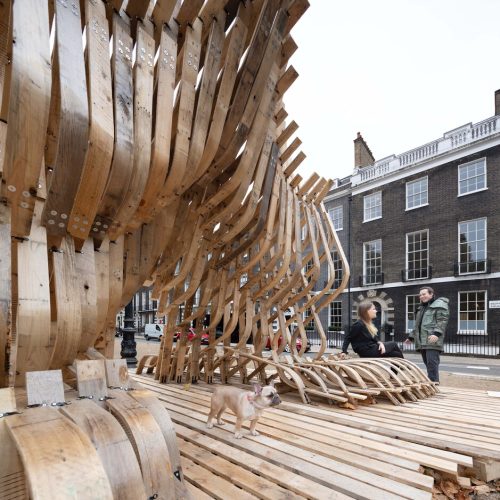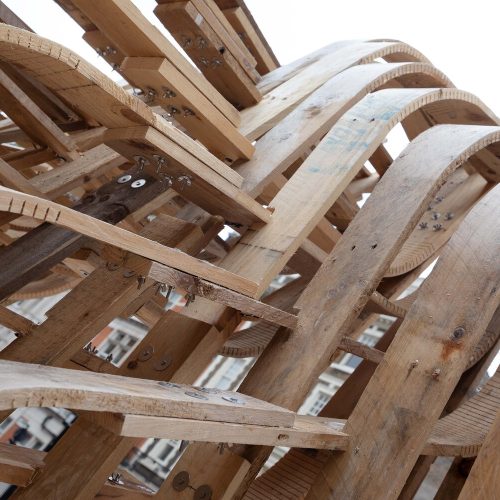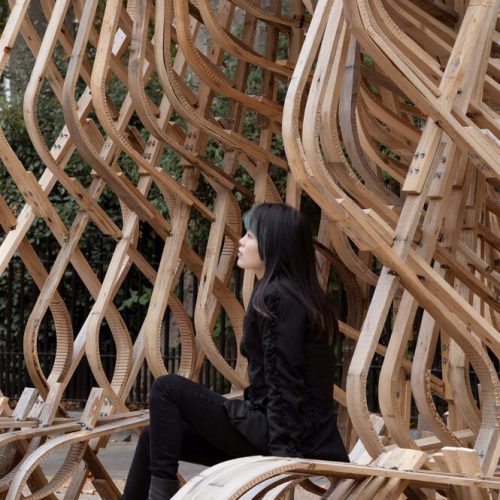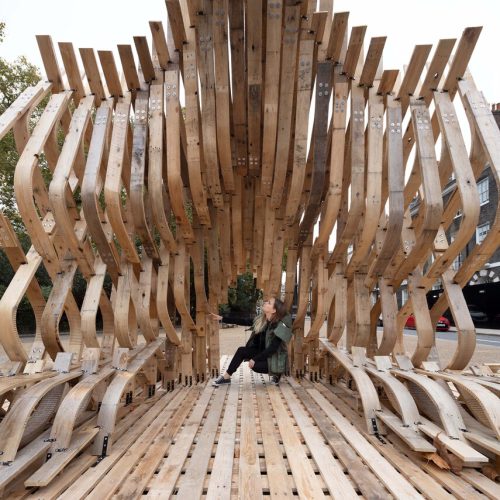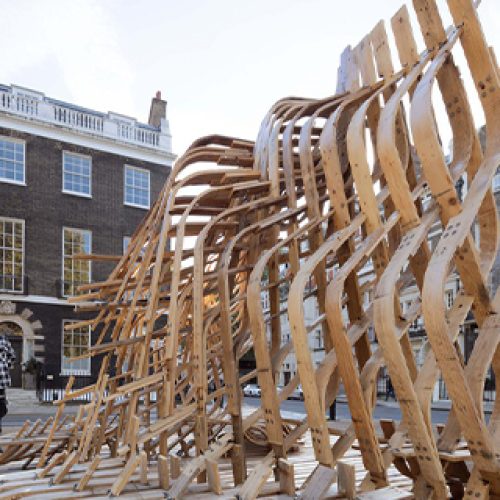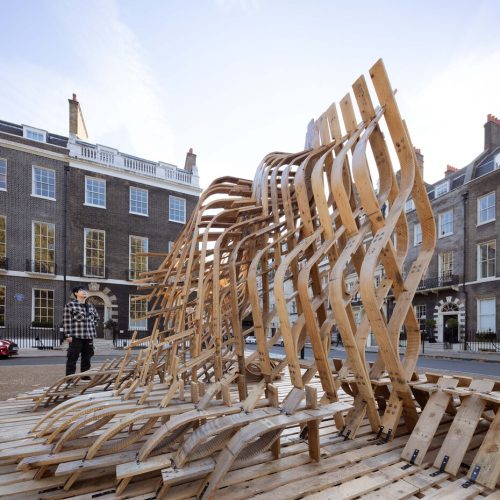RE-EMERGE PAVILION STRUCTURE
EXPLORATION OF SUSTAINABLE ARCHITECTURE AND MATERIAL REUSE
London, United Kingdom
Category: Wood Construction, Computational Design
Featured in: ArchDaily
Hassell Studio + EmTech Post-Graduate Program, Nov 2021
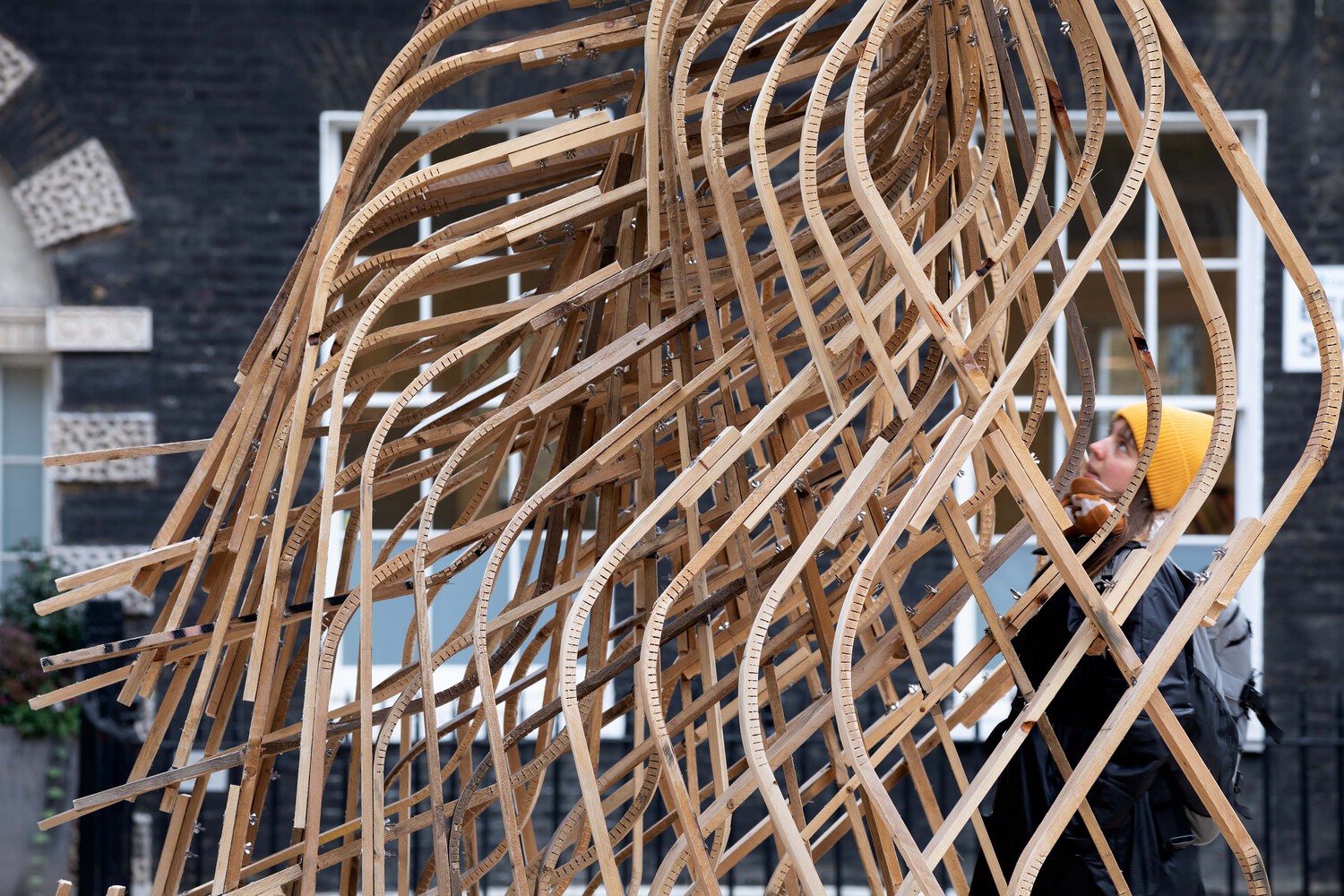
The Re-Emerge Pavilion, a collaborative effort between the AA Emergent Technologies and Design (EmTech) programme and Hassell Studio, stands as a testament to innovative architectural practices aimed at addressing the pressing challenges of resource scarcity and environmental sustainability. Situated in Bedford Square, this pavilion embodies a profound commitment to repurposing materials and exploring new design and construction technologies within the constraints of a world with limited resources.
ENVIRONMENTAL CONSCIOUSNESS AND MATERIAL REUSE
Central to the ethos of Re-Emerge is its dedication to minimizing environmental impact, notably through the conscious choice of materials. The decision to utilize reclaimed timber, sourced primarily from wooden pallets obtained from recycling facilities around London, underscores a commitment to reducing carbon footprint and promoting a circular economy. By repurposing materials at the end of their first life cycle, the pavilion exemplifies a holistic approach to sustainability in architectural design.
DESIGN AND CONSTRUCTION INNOVATIONS
At the heart of Re-Emerge lies a spirit of innovation, manifested through novel design and construction methodologies. The pavilion explores the intricate interplay between generative design, material computation, and large-scale fabrication techniques, resulting in an aesthetically captivating yet ecologically responsible architectural marvel. Notably, the structural system of the pavilion comprises volumetric timber diamond-shaped modules, meticulously crafted from reclaimed wooden pallets and assembled with lap joints to minimize the use of secondary materials.
LIFE CYCLE ASSESSMENT AND ENVIRONMENTAL TRANSPARENCY
Integral to the project is a rigorous Life Cycle Assessment (LCA) that evaluates the environmental footprint of the reclaimed timber utilized in construction. This commitment to transparency extends to the pavilion visitors through an Augmented Reality app, offering insights into the design, fabrication processes, and origins of the reclaimed materials. By incorporating LCA into computational workflows, the project exemplifies a data-driven approach to sustainable design, empowering stakeholders with informed decision-making tools.
FUTURE PROSPECTS AND DISASSEMBLY
As a temporary structure, Re-Emerge embodies the ethos of adaptability and renewal. Following its exhibition period, the pavilion will undergo disassembly, with a portion earmarked for reinstallation in Hassell’s London offices and the remainder returned to timber recycling facilities. This cyclical approach underscores the pavilion’s commitment to fostering a dialogue between architectural innovation and environmental stewardship, paving the way for future endeavors in sustainable architecture.






